#university of iowa libraries special collections
Photo
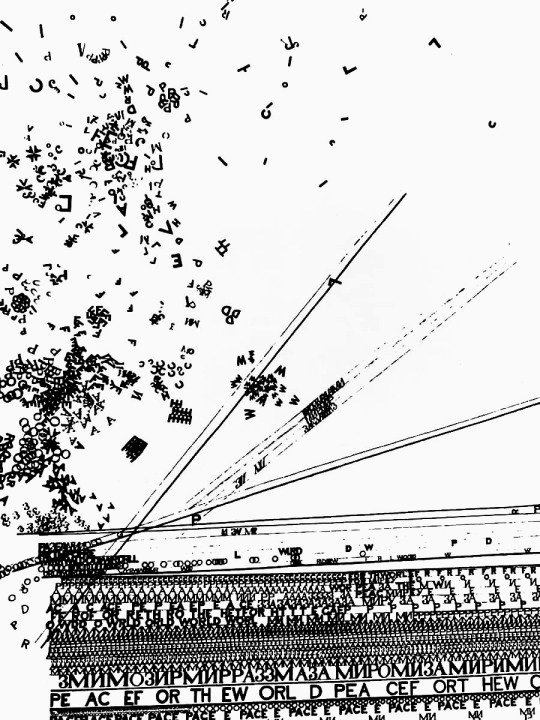
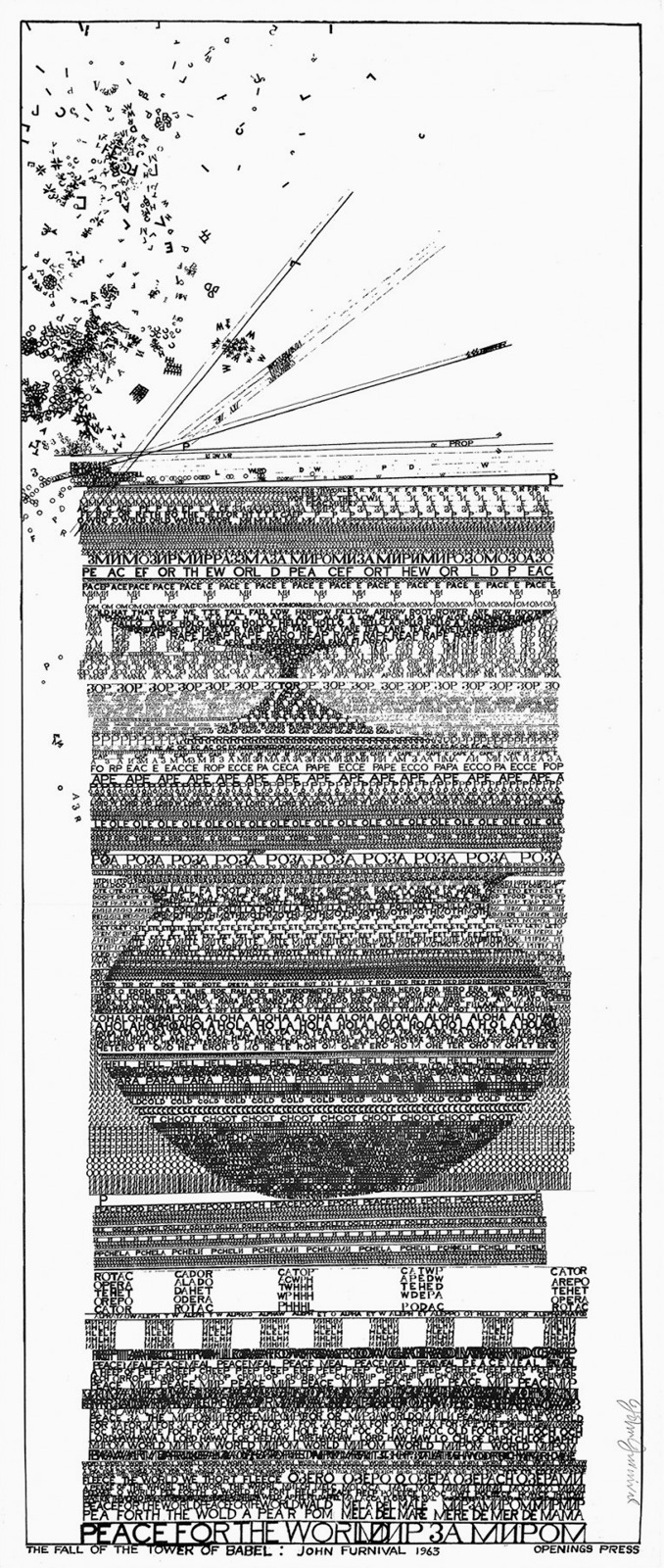


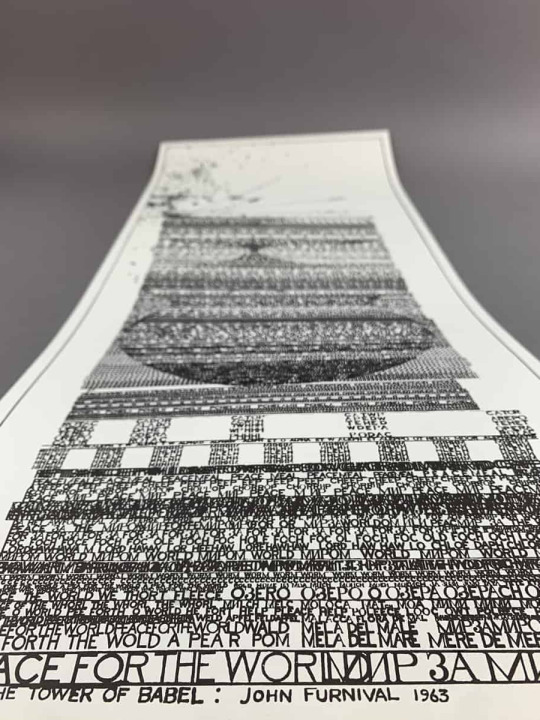
John Furnival, The Fall of the Tower of Babel – Peace to the World, [Opening Press], 1963-1995 [The Sackner Archive of Visual and Concrete Poetry, University of Iowa Libraries Special Collections, University of Iowa Libraries, Iowa City, IA. MACBA, Barcelona. © John Furnival]
#graphic design#art#poetry#concrete poetry#visual poetry#typewriting#geometry#pattern#john furnival#the sackner archive of concrete and visual poetry#university of iowa libraries special collections#university of iowa libraries#macba#1960s#1990s
104 notes
·
View notes
Text


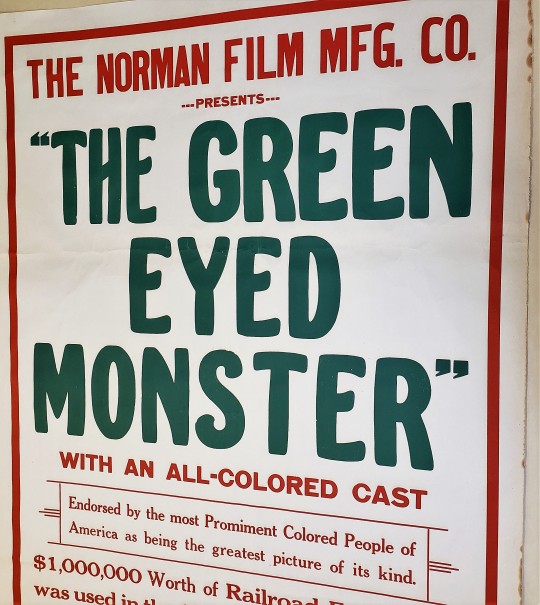
Black History Spotlight: The original movie poster for The Green-Eyed Monster
Last year, Special Collections and Archives at the University of Iowa Libraries acquired items to form a new collection: the Black Film and Television Collection. In honor of Black History Month, we’re shining a spotlight on a different item from this collection. This week, we’re taking a look at one of the collection’s earliest (and rarest) items: the original poster for the 1919 film The Green-Eyed Monster.
The Library of Congress estimates that 75% of all silent films have been lost, and that number unfortunately includes many of the first films made for Black audiences. The Green-Eyed Monster is one such film. Since we don’t have access to the movie itself, marketing materials like this poster offer a vital glimpse into a formative period of cinematic history and a history that was very nearly lost. Amid a culture of violent racism, systemic inequality, and segregation, Black artists behind and in front of the camera offered their audiences a look at the possibilities ahead.
During the era of segregation, Black audiences were already barred from most movie showings, and there were only a few movie houses open specifically for Black viewers. To see movies like The Green-Eyed Monster, they would have had to attend separate, late-night screenings called “midnight rambles.” But attend they did—there was a demand for what came to be called “race films,” and about 500 movies were released to meet it. During the daytime, theaters might show movies like the notoriously racist Birth of a Nation, but at the stroke of midnight, Black audiences could gather to appreciate Black artistry.
Where does The Green-Eyed Monster fit in?
The Green-Eyed Monster was produced by Norman Studios in Jacksonville, Florida. And while the film featured an all-Black cast, the studio that produced it was owned by a white filmmaker, Richard E. Norman, who sought to cater to an untapped audience. To make his first race film, Norman retooled the script for one of his previous films, The Wrecker, and hired Black actors for the roles. Norman Studios would go on to produce seven more feature-length films with all-Black casts, but the studio died out during the rocky transition to “talkies.”
So what exactly was The Green-Eyed Monster about? While the film itself is lost, the broad strokes of the story remain. As the title indicates, the plot revolves around jealousy, both romantic and professional. Two friends who work for rival rail companies end up falling for the same woman—and competing for the same lucrative contract. To settle both conflicts, these friends stake everything on a race on rails. Given that the poster aims to entice audiences with an “$80,000.00 train wreck,” it’s safe to assume that in this case, the track to true love is a perilous one.
While this poster and the film it advertises represent a form of progress, the most impactful works in the genre of race film were produced by Black filmmakers at Black-owned studios.
Lincoln Studios and Oscar Micheaux
In the early years of cinema, the industry wasn’t centralized in Los Angeles the way it is today, and production companies could be found in cities across the country. One such studio was Lincoln Motion Picture Company, which began in Lincoln, Nebraska, in 1916 and lasted until 1921. Its founders were brothers, Noble Johnson and George Perry Johnson, and their 1916 debut was the first-ever race film, The Realization of a Negro’s Ambition. This is widely credited as the first film ever to portray the experience of middle-class Black characters. Its story is as aspirational as its title: a dreamer strikes out to make it in the oil business, excels, and returns to his family a wealthy man.
The same segregation policies that led to the phenomenon of midnight rambles made it especially difficult for a production company aimed at a Black audience to maintain its bottom line. Again, that’s not because these films lacked an interested viewership; their distribution was limited by the racist policies of the time, and so were their profits. While Lincoln was a short-lived venture, its impact can’t be overstated. By the time the studio that originated race films closed down, another Black leader had found his calling in film.
Oscar Micheaux’s Chicago studio, Micheaux Film Corporation, was one such company. Throughout his decades-long career, Micheaux produced 40 films. His features showed Black audiences a world they recognized: a place of struggle and striving, where racism was a constant reality. He also wrote Black characters they could identify with, fully human in contrast to the caricatures in white films of the time.
There are so many other stories to be found in the Black Film and Television Collection. Next week, we’ll dive deeper into Micheaux, his Midwestern connections, and the continued rise of race films in the first half of the twentieth century.
--Natalee Dawson, Communication Coordinator at UIowa Libraries with assistance from Liz Riordan, Anne Bassett, and Jerome Kirby
#university of iowa#special collections#film#silent film#black history matters#black history month#black film#libraries#Norman Films Co#green eyed monster
85 notes
·
View notes
Note
Hi Jen!
Im 20y and a lesbian that loves lesbian history and im just wondering about that Era that you lived as a lesbian: the 80's and e the 70's.
There was so many lesbian magazines, zines, activism....i spend hours of my days reading online the Lavender Menace magazine and Sinister Wisdom, its just so amazing to me that lesbians created a fundation of their our culture, language and lifestyle at the time. So my question is, how was it back then compared to today since we dont have the same kind of community, we have barely 5 lesbian bars in the whole US and our activism is fragmented almost non existent? Especially since lesbophobia or oppresion on homossexuals did not end and we still face it.
Thanks, and I love your blog.
I was lucky enough to come out in a place, Iowa City, where lesbians were well organized and active. Iowa City was the home of a Women's Press printing group that formed under the idea that "We coudn't get it printed so we learned how to print". That press was disbanded in 1985 but it's legacy lived on. My lesbian community was broad and diverse and welcoming. They had a history of working together even if they weren't old enough or active in the political side of things in the early 80's. The foundation of lesbians (women) working together was built and we stood on that solid ground.
I was never a big reader of lesbian history. I preferred to experience it in life, to hear the stories from the other lesbians in my community or at festival or wherever I could corner some woman to tell her about her life. But sometimes now I read over the older pamphlets and news letters and every time it renews my passion to pass on lesbian culuture and positivity to others. I see the importance of keeping papers and not relying on computer documents and only oral, unrecorded stories.
What used to be the University of Iowa Lesbian archives is now housed under the LGBTQIA archives but you can still seach “lesbian” and they curators/volunteers (at least one of which is a butch lesbians ;) )are happy to email you images to read. You can look for entire collections and almost all are digitized or in the process. Through that archive you aill find new places to search. They have tiktok as well.
https://lgbtqiowa.org/history-by-letter/history-by-letter-1-iowa-city-womens-press/
Most universities have some sort of lesbian archive in their special collections. They are a great place to start for local lesbian history. And they are more than happy to share. Some even offer free lectures if you want to organize the space (public library) and do some advertising.
www.LConline.org is Lesbian Connection. You can subscribe for about 35.00 or free to lesbians is you can’t afford to pay. They often sell back issues.
Now that you have some new sources. Heres how it was for me when I came out in 1993, just out of college to years and living in Iowa City which was often called the Gayest town in Iowa. A sort of gay and lesbian bubble in a state not known for diversity.
We have a gay club, in every major city. Des Moines with several, Iowa City, Cedar Rapids, the Qaud Cities and Waterloo/Cedar Falls. We have an unofficial lesbian club ( a bar owned by lesbians, close enough) in Iowa City. We were all in our early to late 20′s and so going out and dancing/drinking was sort of a go to for us. We had lesbian pool, dart. softball, volleyball (my favorite) and kickball leagues. Only lesbians. There were gay men leagues as well and we sometimes played each other for fun. There were also mixed groups for those who wanted to play on multiple nights or wanted that space. We had a BLAST! After (and often during games) we shared beer and laughter, meals and snacks.
The bars that hosted us were mostly straight and we brought income and activitiy so we had no push back and were often invited to new ones. The volleyball and softball fields gave us equpment to use and sometimes a business, like a bar or restaurant would give us t shirts. If we wore those shirts around we sometimes got discounts. What a grand time we had!
As we got older going out or playing sports and practicing 2 or 3 nights a week became more difficult. Jobs, kids, home ownership and priorities shifted. Instead my friend group had monthly potlucks or meeting at a restaurant. The lesbian bar burned down and was not rebuilt so we took to camp fires at each others homes or meals at diners on Saturday morning.
Women’s Festivals became an important part of my life and that of my lesbian friends. I started going in 1994 when introduced by my first girlfriend and friend group. In the later years, when we were not as active locally due to life being busy, we would spend time planning and prepping for that 7 to 10 day camping in a state 7 hours away. We would gather with a purpose and eat and drink and talk about memories and what fun we will have on vacation. Those 7 days camping at a women’s festival gave us the down time to hang out and renew our friendships. Time to talk and laugh and dance and catch up without the world in the way. Without that women’s festival being the steady, predictable place for us to meet I am not sure our friend group would still be strong like it is.
Now we meet to talk about the “old days” over food or campfires. We zoomed over covid realizing how much we missed each other and how life had gotten in the way. Since then we try harder to make time. We are getting back to festivals and bring new, young lesbians on board to experience what was life changing to us. To ME. We work together (my boss and her wife and my first ex are all friends from my coming out days). We MAKE time to eat out or camp or just sit in lawn chairs in back yards.
This is my lesbian experience. And I wish all lesbians could land in the lap of such a strong group of women like I did. NOT that there was not drama LOL. Of course there were exes and breakups and disagreements but when someone needed time she knew she could take it and we would keep inviting. No one was shamed for “never coming” because we all knew not joining in now did not mean she would not want to come back in the future.
When the world gets too much and i look in my DM’s or on line and see younger or newly out older lesbians suffering from distress caused by isolation or the current political envirnonment or lack of lesbian role models I go to my friends and talk and listen and get hugs. They ultimately give me hope and I take that out into the world.
We are finding each other and the key is to translate on line community to in person community. Three lesbians getting coffee and forming a friendship is better than 20 lesbians meeting on line although both are better than no lesbians connecting. The adivice I always give and stand firm on is get to a womens or lesbian festvial. You will not regret it. It will change your life and give you life long friendships.
109 notes
·
View notes
Text
This Day in Buster…July 29, 1918
A special birthday treat in honor of Eleanor Ruth Norris, who became the third Mrs Keaton and would be celebrating her 104th birthday today! With grateful thanks to the University of Iowa library for this audio clip - Eleanor interviewed by biographer Marion Meade.
[Interview with Eleanor Keaton, Marion Meade Buster Keaton Research Files, Special Collections & Archives, The University of Iowa Libraries.]
#this day in buster#buster keaton#Eleanor keaton#third times the charm#Marion meade#cirque medrano#ibks#the international Buster Keaton society#Buster Keaton society#the damfinos#damfino#damfamily
5 notes
·
View notes
Text
Richard Maibaum Papers - James Bond - Curator Interview
Richard Maibaum Papers at the University of Iowa
Richard Maibaum, who wrote many of the James Bond movie screenplays, donated his papers to the University of Iowa. Pete Balestrieri is the curator for Science Fiction and Pop Culture at the University of Iowa Library.
Join Dan and Tom as they have a discussion with Pete on the Richard Maibaum Papers. This collection includes a large selection of Maibaum's working materials he used to write 13 James Bond movies. Pete shares his insights into many topics on the development of the movies. For instance, he talks about Sean Connery's thoughts on the role of Pussy Galore in Goldfinger and what Richard Maibaum did because of those thoughts.
One fascinating part of the collection is the research folders. These contain articles that Maibaum clipped out on a variety of topics he researched for plot points. For instance, there is an article on blimps which he clipped out 3 years before A View To A Kill came out.
But, to us, probably the most interesting part of the collection are the treatments that Maibaum wrote. These are the stories before they are turned into screenplays. As a result, you get to see how the story evolves, sometimes dramatically.It is very cool to read a movie's treatments and see the evolution of the movie's story.
It's not just James Bond
Another key point of the disucssion is that the James Bond materials are only part of the collection. Richard Maibaum wrote many other movies and plays. While you are there you can see some of Maibaum's notes on his other projects including includes OSS, The Great Gatsby, and Tank Force.
Pete discusses the collection, how you can see it and other collections they have at the Library such as the papers from Norman Felton who produced The Man From U.N.C.L.E.
This is a wide-ranging, fun discussion. Pete knows his movie and shares his passion for them in this interview.
Find out More
You can find out more about the special collections at the University of Iowa here.
Contact us at [email protected]
Webpage address: https://bit.ly/3eLldh5
Check out this episode as we are Cracking the Code of Spy Movies!
#James Bond#Mission Impossible#Bourne#spy movies#classic spy movies#espionage movies#secret agent movies
0 notes
Photo

View of Special Collections from the corridor of Main Library, The University of Iowa, 1970
Creator: Kent, F.W.
https://digital.lib.uiowa.edu/islandora/object/ui%3Aictcs_17769
19 notes
·
View notes
Photo
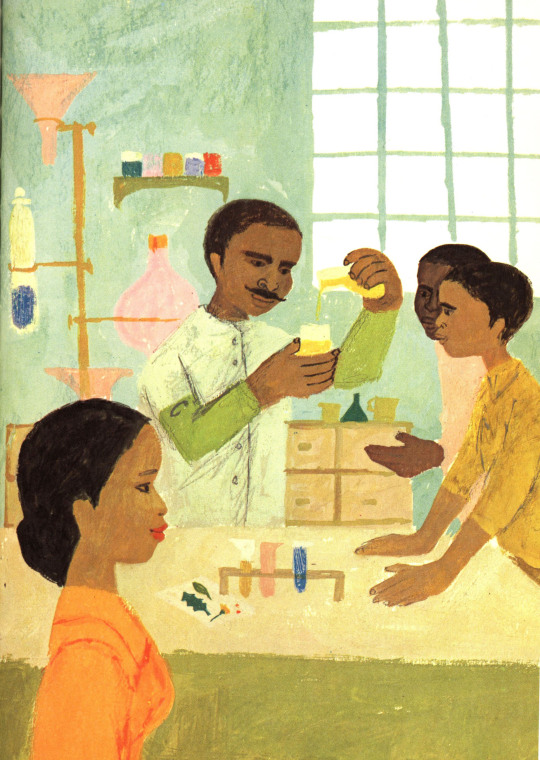
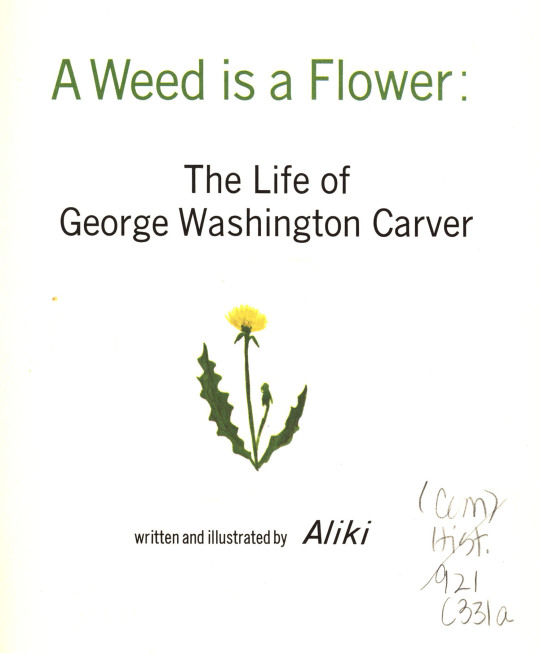

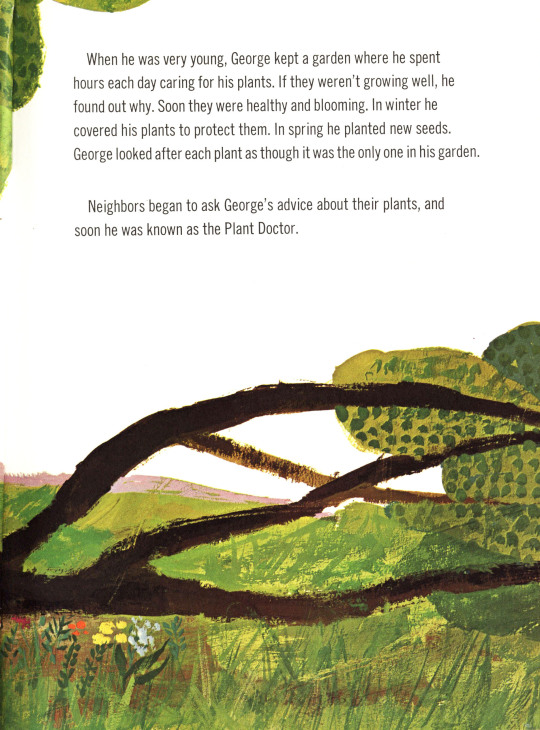
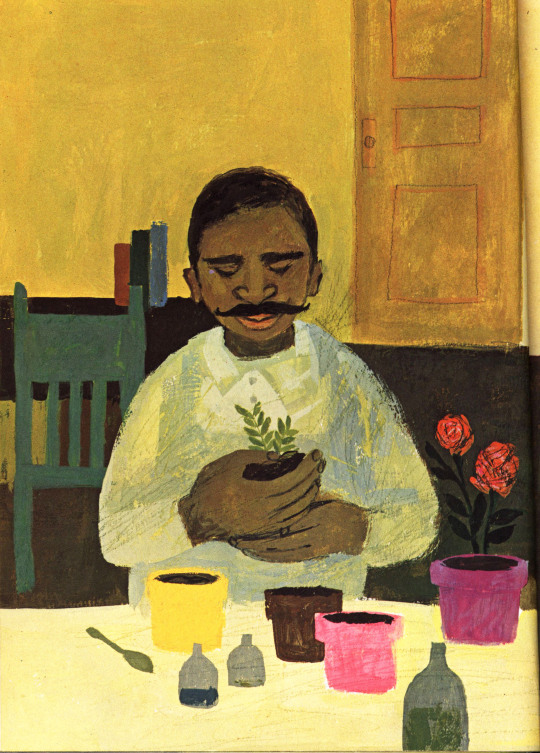
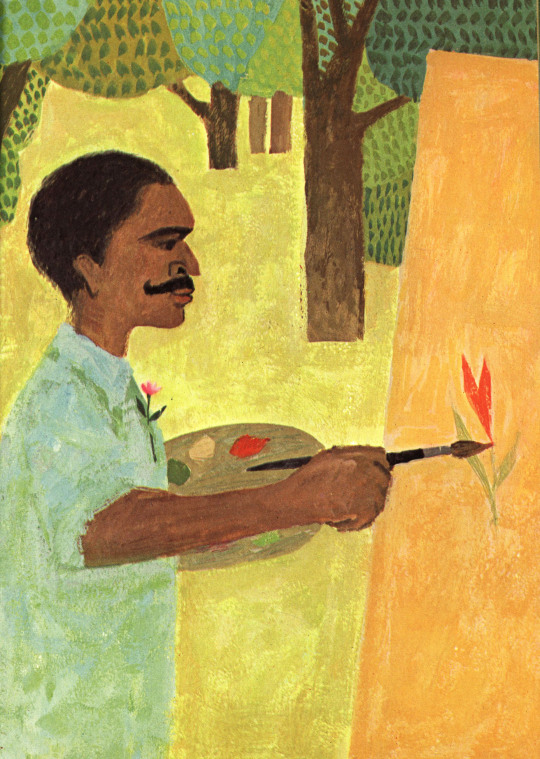
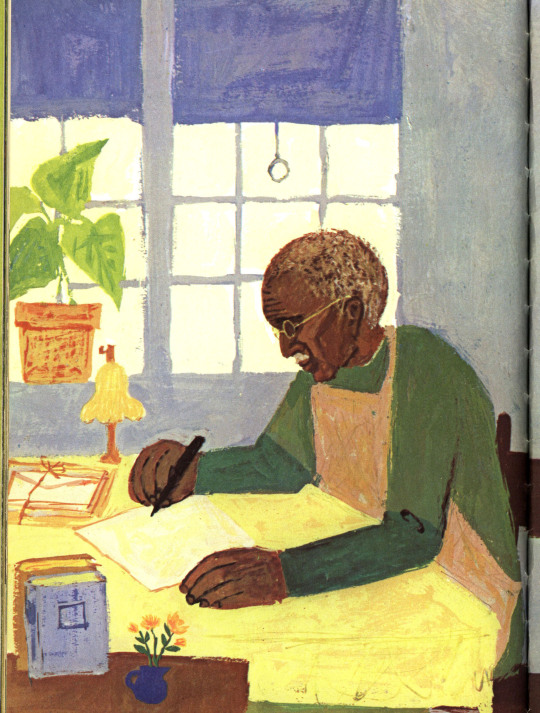
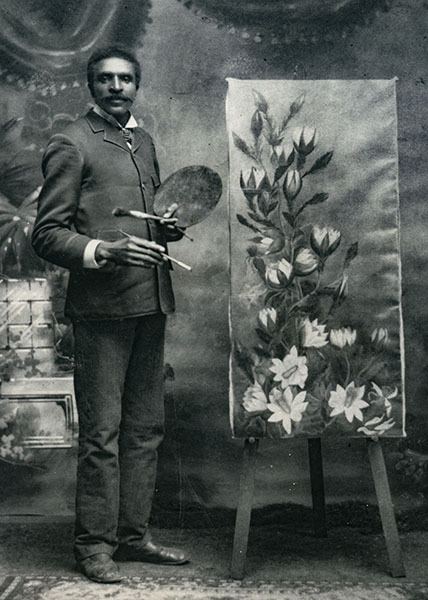

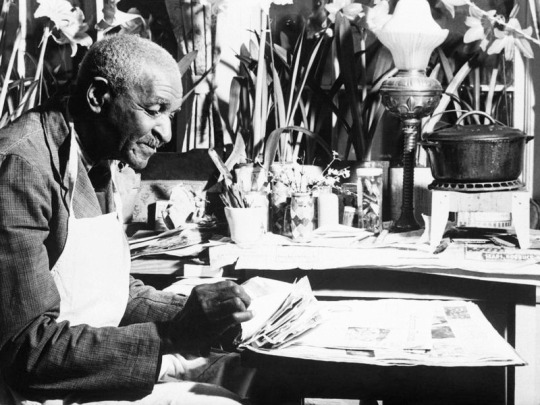
Science Saturday: George Washington Carver
This week we celebrate the scientific contributions of George Washington Carver with a book from our Historical Curriculum Collection A Weed is a Flower: The Life of George Washington Carver written and illustrated by Aliki (full name Aliki Liacouras Brandenberg), published by Prentice-Hall, Inc. in Englewood Cliffs, New Jersey in 1965. The book gets its title from something Carver often said: “a weed is a flower growing in the wrong place.”
George Washington Carver (1864? – January 5, 1943) was an American agricultural scientist, inventor, and environmentalist. The exact date of George Washington Carver’s birth is unknown, but he was born into slavery right around the time of the Civil War. At an early age, Carver experimented with natural pesticides and fungicides, and was known by neighboring farmers as the “plant doctor.” After emancipation, Carver pursued education and eventually went on to earn a master’s degree in agricultural science from Iowa State University. Initially Carver was interested in pursuing an education in art and piano, but he was encouraged by a teacher named Etta Budd to pursue agriculture because of his interest in plants. Carver’s art background would serve him well as a scientist. After graduate school, Carver accepted an offer to establish an agriculture program at Tuskegee University in Alabama. He worked at Tuskegee for the rest of his life, dedicating most of his time to research. He is best known for encouraging sustainable farming practices such as crop rotation. Cotton crops had depleted the soil of nitrogen. Legumes (such as peanuts) and sweet potatoes could help restore the soil, and he argued there could be many uses for these new crops. Carver promoted his work with agricultural bulletins and speaking tours.
Descriptions of the photographs:
1.) Portrait of George Washington Carver painting from the Tuskegee University Archives and featured on the Encyclopedia of Alabama website. The caption reads: “George Washington Carver initially enrolled in college as an art major, but after seeing his skill at hybridizing plants his art teacher suggested he study horticulture at Iowa State College of Agricultural and Mechanic Arts (now Iowa State University). He continued to create art through painting and fiber arts and other media throughout his life, however.”
2.) Photograph of the Chemistry Laboratory at Tuskegee Institute. Photographed by Frances Benjamin Johnston from the Library of Congress Prints and Photographs Division.
3.) 1940 photograph from the article “In Search of George Washington Carver’s True Legacy” on the Smithsonian Magazine website.
View other Science Saturday posts.
–Sarah, Special Collections Graduate Intern
#Science Saturday#George Washington Carver#A Weed is a Flower#Aliki#Aliki Liacouras Brandenberg#Tuskegee University#inventions#farming#agriculture#peanuts#chemistry#environmentalism#Black scientists#Black history#scientific illustration#botany#Historical Curriculum Collection#scientists#science#plant#plants#Sarah Finn#sarah
599 notes
·
View notes
Text
As a follow-up, I thought I’d share a few ideas for my fellow outside-the-system rebel researchers who are trying to learn and engage with academic topics while simultaneously running into paywalls or other obstacles due to not being affiliated with universities:
First things first, re: papers, check to see what you have access to through your local library! Lots of them subscribe to databases that their users can access completely free. I know mine gives me access to the entire online archive of National Geographic magazines and even JSTOR, amongst so many other things, which is a pretty big deal!
LibGuides! If you’re not familiar with them, LibGuides are essentially webpages of resources that librarians put together for people researching specific topics. Often the university-affiliated ones will have certain paywalled links or sections, but they’re still great places to find thematically-organized book recs or lists of reputable, academic websites on specific research topics.
AND LASTLY. I have not looked into all of my options or the exact rules enough (they probably vary from institution to institution), but did you know that you can just. Go to college libraries. Some have more restrictions than others, but last winter I was able to waltz into the University of Iowa special collections as a “guest researcher” and ask them to pull out some materials for me to sit and read for a few hours. They were even fine with me taking lots of pictures so I could reference them later. So definitely look into the rules of some of the academic institutions closest to you if they have something you’re interested in.
810 notes
·
View notes
Text
The ‘Does This Make Sense?’ Check - Chapter 4, Part 5, Preservation
Part 1 covers the introduction of Chapter 4, The Bookbinders
Part 2 covers the methodology of this chapter and the bookbinders’ motivations
Part 3 covers how fic binding completes the communication circuit via fan reciprocation
Part 4 covers how fic binding challenges traditional publishing norms
The Redundancy of Preservation
Anthony Grafton writes that to understand books, we must interview them in their environment, so to understand bound fic, book historians must attend to two fannish environments: the unstable digital distributing platforms from which fic came, and the material preservation form born in fannish response [1]. The history of fandom media illustrates the instability of digital media in myriad ways: links break, sites crash, URLs expire. Many of the binders have experienced fic loss—returning to bookmarked fic only to find it had disappeared, deleted without any indication of what it may have been—but few said that it wholly or significantly influences their desire to bind fic. In response to the question, ‘Who or what do you trust to build a reliable archive of fic, if anyone?’ the binders unanimously cited AO3, but with trepidation. One binder wrote ‘I do not have unshakeable faith that they will be able to remain successfully funded for the foreseeable future or that laws won't be passed that lead to the site being shut down. The key to survival is redundancy, both digital and offline’. Another echoed, ‘the entire internet is ephemeral, and I have had too many technical snafus to put my entire trust into digital format’. And a third: ‘I’m going through my bookmarks and archiving them to the Internet Archive so they are protected against author removal’. The binders share a general wariness towards relying on digital forms, and while preserving fic is not the only or driving reason for binding fic, it is on the list. Preserving works in print also communicates their legitimacy, especially that of queer works, which historically have been condemned or outright destroyed. Bound fic counters the pitfalls of digital sites, where fan work may be lost without warning, but lacks the real-time feedback in comments and kudos and the links to additional fan works, although those still exist online. Bound fic also counters fallacies of traditional publishing, which tends to ignore fan works. As I discussed in the Introduction and Chapter 3, although works like Pride & Prejudice & Zombies emerge from commercial publishing houses, I reiterate that they are not fanfiction precisely because they were not written in nor attend to a fannish context in the way that bound fic does [2].
The binders change the text in preparing it from digital for print form. All of the binders cut comments and many exclude or rearrange any combination of summaries, author notes, and disclaimers, and kudos and hits statistics. One lacks sentimentality around these excisions: binding fic ‘is less of an archive project than a pleasure project’, so the concern for preservation pales to readability. Binders range in their approach to formatting metadata: two binders include metadata (author, title, tags, archive warnings, etc.) as a ‘copyright page’, with content warnings and research notes as appendices. Another includes summaries and tags because to make ‘these books to feel like a true physical version of what’s there on the web’. One binder of 104 fics has modified their typesetting process to expedite the time from screen to print in attempts to bind as many fics as quickly as possible:
Nowadays I drop everything in and go, for two reasons. I try to do a lot of fics and [editing out Author Notes] is a huge time suck. But these notes are also significant as part of the metatext. In the future these will be of interest to any scholar studying early years of online fandom and just contributes to these books being a time capsule of a phenomenon that is very specific to our time and place.
By favoring production speeds over editing, this binder prioritizes print preservation (and documents a book’s environment for a future book historian); ten binders move metadata and extratextual information to appendices or smaller, side bindings to avoid interrupting reading flow without eliminating the information. Although the lack of text editing seemingly counters the attention to craft, the binders distinguished between the craft of the book—its binding, endpapers, and internal ornamentation—from the content of the text itself. Formatting a text can be the most time-consuming task, so reducing that process expedites the production of a volume significantly.
A few themes emerge regarding losses in transforming fic to print form, including accessibility, interactivity, and malleability. Only people with copies of the fic can read those copies, although the fic remains online for the time being. The loss of hyperlinks and comments strips the fic of its community context. Printed versions inhibit the writer’s ability to edit and update the fic, and one binder noted that ficbinding’s greatest strength and weakness is that it makes fic ‘a fossil of a fixed point in time…It leaves no room to adapt’. But the gain is a hard copy and a sense of long-term preservation independent of online activity: ‘As long as Modern English can be read and the book remains undamaged by water, fire or other problematic time-passing problems, it is here and real’. This kind of preservation aligns with a history of recovering lost works via their textual commentaries; were every copy of Harry Potter to be lost and the internet wiped, one could reconstruct the events of the series via bound copies of Annerb’s ‘The Changeling’ and dirgewithoutmusic’s ‘boy with a scar’ series. Similarly, where the digitally-linked community disappears, it is reforged through sharing the copy with the author, who ‘gets to see how a reader put different materials together to best represent their work’. One binder wrote, ‘I think this is a case of having your cake and eating it too: the electronic copy is still there for the wider audience to read, the text is set in a permanent form which has its own artistic value’. The gains of permanence, the opportunity to create a physical object, and the ability to thank the writer for their work through bound fic outweigh the instantaneous losses of accessibility and digital interactivity.
One of my final questions to the binders concerned the long-term preservation of their library: where will their bound works go if they can no longer take care of them or die? One binder was in discussion with the University of Iowa special collections, which is home to a notable fanzines collection. Four posed sending the volumes to fandom friends, two want to bequeath them to family, and two have explicitly stated their wishes in their wills. One added that he firstly trusts fans to appreciate fan-printed books as both ‘stories worth reading’ and as art objects, rather than non-fans who do not understand the connotations of the works. Binding fic is a momentary win in the long-term battle against information loss, and these personal libraries prolong the question of how and where these works will survive. One binder articulated the long-term value of these volumes: ‘I think that people making fine binding versions of fic absolutely validates this place in libraries, and I have no doubt that some of the books made by the fic binding community will make their way into the special collection libraries or museums and other institutions’. Ensuring that preservation will most likely be a self-undertaken project, in the way that all things fandom are.
Citations
Anthony Grafton, ‘Codex in crisis: the book dematerializes’, in Worlds made by words: scholarship and community in the modern West (Cambridge: Harvard University Press, 2009), p.311.
If you actually go back and read the drafts of the Introduction and Chapter 3 that I have posted, I have not yet explained this. Basically, adaptive works like P&P&Z don’t meet Coppa’s criteria (fic made to fannish standards, written about stories currently owned by someone else. Pride and Prejudice is in the public domain, etc.). I’ll have a post next week about this issue with upcoming reimaginings of The Great Gatsby to elaborate further on this really fun question.
#does this make sense check#chapter 4#fic binders#bookbinding fic#fic binding#preservation#Anthony Grafton#phew!#that is it#we did it#thanks for sticking with me
52 notes
·
View notes
Photo

Photographic copy of undated photograph; Photographer unknown; Original in Rath collection at Iowa State University Libraries, Department of Special Collections, Ames, Iowa; Filed under: Rath Packing Company, Public Relations, Symbol N, Box 106, File 6; HOG KILLING OPERATIONS INSIDE BUILDING 40; WORKER AT RIGHT REAR IS USING BLOWTORCH TO REMOVE BRISTLES FROM CARCASSES - Rath Packing Company, Hog Killing & By-Products Building, Sycamore Street between Elm & Eighteenth Streets, Waterloo, Black Hawk County, IA
4 notes
·
View notes
Text
#VoicesFromTheStacks

image taken from Iowa Now.
Bill Sackter was born in St. Paul, Minnesota in 1913, born to Russian Jewish immigrant parents. His father passed when he was 7 due to the Spanish flu, and the same year Sackter struggled in school. After taking a mandatory intelligence test, the state sentenced a verdict that placed him in the Faribault State School for the Feeble-Minded and Epileptic. He stayed there for 44 years.
In 1964, when new treatments were being introduced for people with disabilities, Sackter was moved to a halfway house where he worked to support himself, and made friends with filmmaker Barry Morrow and his wife. As their friendship evolved, Marrow became Sackter's guardian, and when Marrow got a job at the University of Iowa, Sackter followed him to Iowa City where he became the proprietor of Wild Bill's Coffee shop.
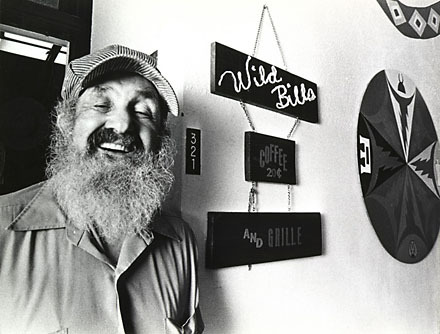
image taken from The Iowa Source
Wild Bill's Coffee Shop -- The late Tom Walz, a former director and professor in the UI School of Social work, created Wild Bill's Coffee Shop in 1975 to provide work for Sackter. Walz put him in charge of running the small coffee service located in North Hall. The coffee shop employed individuals with disabilities and served as both a job site for them and a learning lab for social work students.
In 2021, 46 years of service, the shop determined that because other coffee shops and kiosks in the area were hiring individuals with disabilities, that they would close down the coffee shop and instead make the now renamed "Wild Bill's" into a "community space, makers' space, and classroom" and that the space will still "collaborate with the disabilities community to include people with disabilities in the school’s social justice advocacy, and carry on the legacy of innovative social work faculty who came before."
Apart from the coffee shop, Bill Sackter was busy working with media groups that were interested in his life. Walz created a written biography about him, while Marrow co-wrote a movie about his life titled Bill (1981). That movie did so well it earned a sequel: Bill on His Own (1983). From the movie Bill, here at UIowa we have the Emmy and the Emmy Award video that the movie won. We also have the documentary that was made about Sackter's life titled "A Friend Indeed – The Bill Sackter Story."

Dennis Quaid (actor), Sactker, and Morrow accepting Golden Globe from the Iowa Digital Library.
More about Bill Sackter and the history of Wild Bill's Coffee Shop can be found here and here on our Iowa Digital Library!
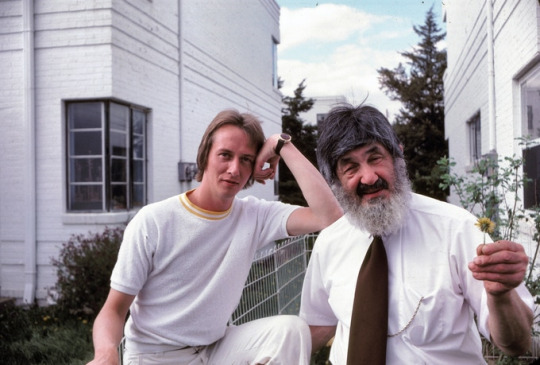
Morrow & Sacktner, image taken from Kickstarter.
We also have other collections relating to disability and disability activism, which can be found by searching here.
Did you know..
that according to the CDC, 1 in 4 adults in the US have some type of disability, 1 in 4 adults (45-64) have not had a routine check-up in the past year, 1 in 3 (18-44) adults with disabilities have an unmet healthcare need because of costs, don't have a usual health care provider, and that many individuals with disabilities are unable to get married without losing their benefits? Learn more from activists Alice Wong, Haben Girma, and the late Evelyne Jobe Villines.
At the University of Iowa, we also have services at the student level [UI Students for Disability Advocacy & Awareness (UISDAA)] and institutional level [Student Disability Services (SDS)].
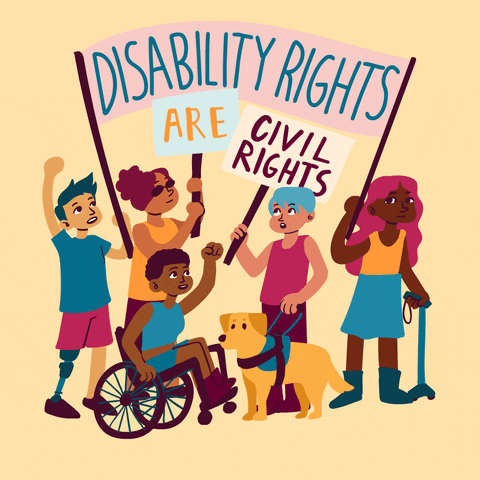
Gif taken from Giphy.
Happy Disability Pride Month!
-Matrice Y., Special Collections, Olson Graduate Assistant.
#disability pride month#special collections#uiowa#libraries#uiowaspecialcollections#voicesfromthestacks#specialcollections#university of iowa#bill sackter#wild bill's#social work
99 notes
·
View notes
Photo
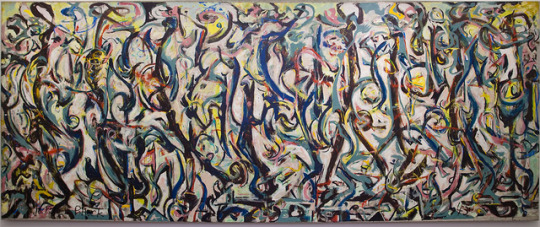
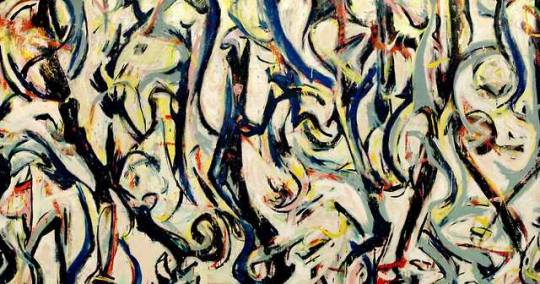
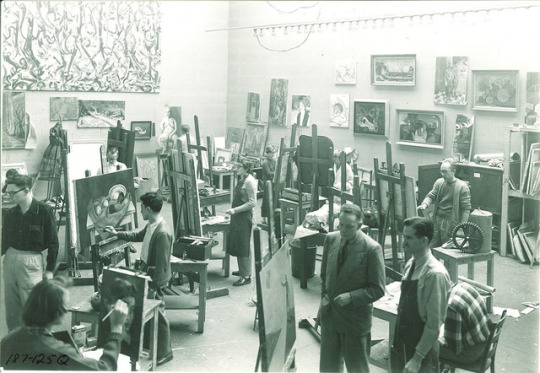
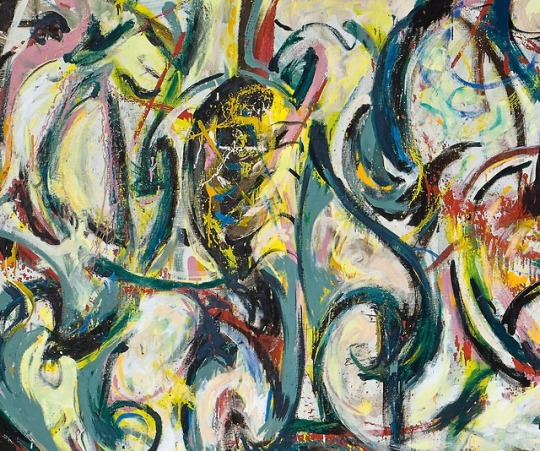
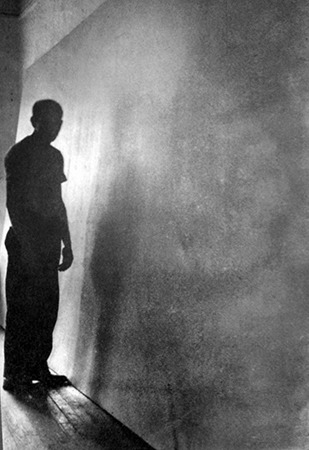
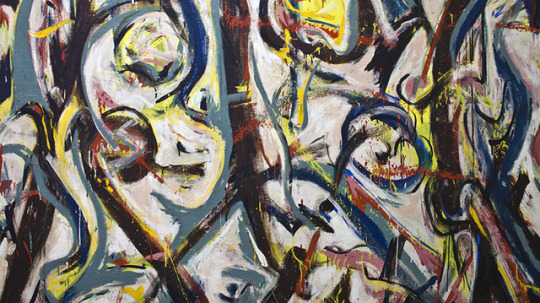

Jackson Pollock, Mural, 1943-1944
Painting with details.
Frederick W. Kent, Art students at work beneath Mural in the painting studio at the University of Iowa, early 1950s.
Bernard Schardt, Jackson Pollock beside the canvas for Mural, 1943
Herbert Matter, Jackson Pollock with Mural in the studios of Vogue magazine in 1947.
Images courtesy of the Frederick W. Kent Collection of Photographs, University of Iowa Libraries, Iowa City, Iowa and Estate of Herbert Matter. Special Collections and University Archives Department, Stanford University Libraries
#jackson pollock#university of iowa#frederick w kent#art class#herbert matter#abstract expressionism#art#mural
393 notes
·
View notes
Photo

Join Tim Barrett, director of the UI Center for the Book and papermaking specialist, as he recounts his 47 year engagement in the craft, science, history and aesthetics of handmade paper in his talk My Life with Paper* (a most rewarding ride, with only a few diversions). Tim will have paper specimens and a number of his favorite items from UI Special Collections on display. Questions and comments from the audience will be warmly encouraged. Event will be held in Special Collections Reading Room, 3rd floor of the Main Library. Light refreshments will be served at 6:30pm, with the talk to begin at 7pm. Iowa Bibliophiles is free and open for everyone. If you have accommodation needs, please contact Elizabeth Riordan at [email protected] (at University of Iowa Special Collections & University Archives) https://www.instagram.com/p/B55rFARpMh2/?igshid=17k0hv40ky1hb
3 notes
·
View notes
Photo
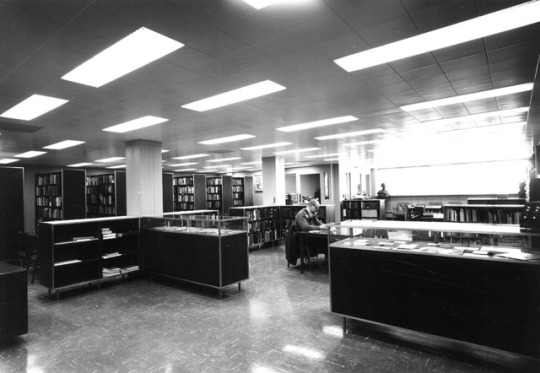
Special Collections department of the Main Library, The University of Iowa, April 1970
Creator: Kent, Frederick W.
Source: http://digital.lib.uiowa.edu/cdm/ref/collection/ictcs/id/15664
#Special Collections#library#Main Library#Libraries#Books#Collections#Librarians#Glass Cases#Chairs#Bookcases#Iowa City#1970#1970s#The University of Iowa#Frederick W. Kent
6 notes
·
View notes
Photo

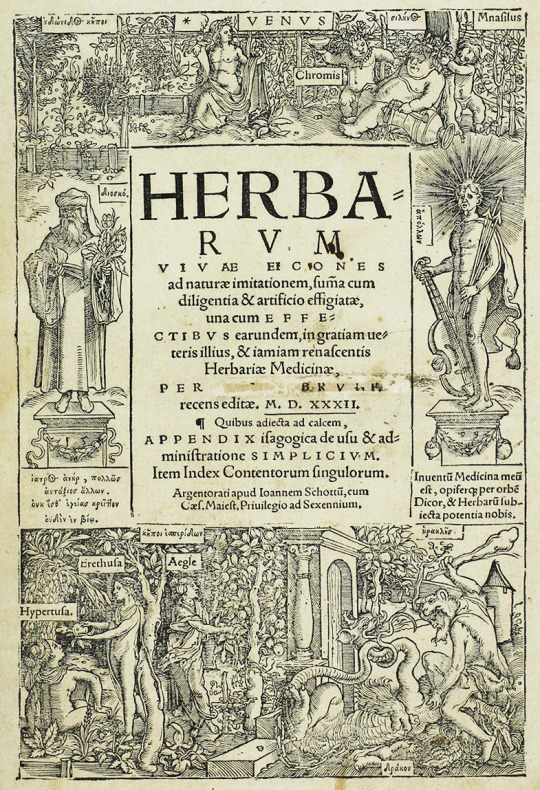


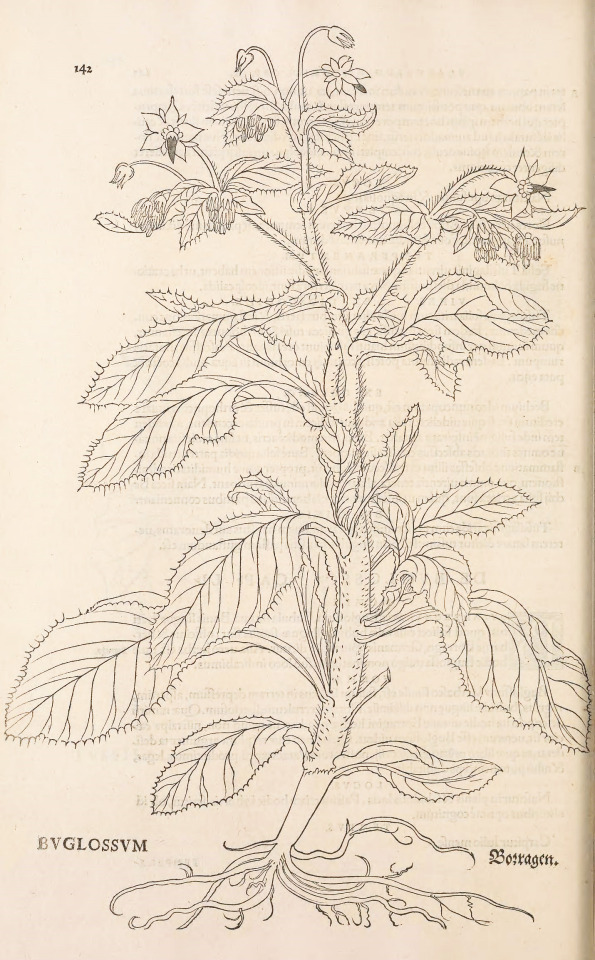

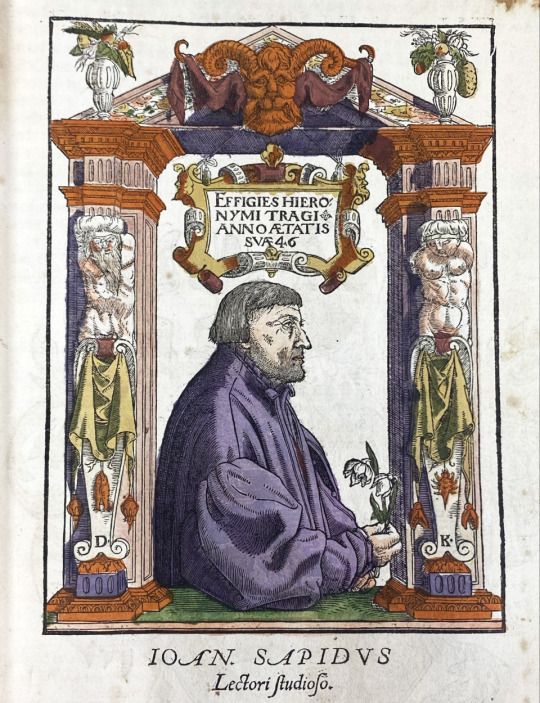
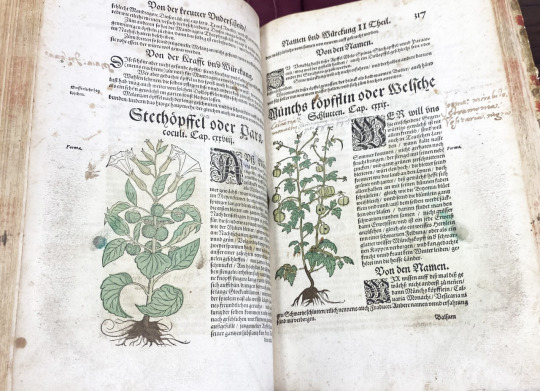


Summer Series: The Spectacle of Nature
The Three Founders of Botany
Botany in the West developed as a distinct discipline of scientific study in the 16th century. This is the period when the “Three Founders of Botany” Otto Brunfels, Leonhart Fuchs, and Hieronymus Bock published their great illustrated herbals. Prior to this, herbals were collections of plant knowledge passed down from ancient Greek scholars (as discussed in the previous post on the Ortus sanitatis, or “Garden of Health”) or local folk knowledge. The botany of the Aristotelian school of thought was largely forgotten in Europe after the fall of the Roman Empire and through much of the Middle Ages. These ideas were kept alive through the foundation of Greek schools in Syria, and the translations of classical Greek and Roman scholars throughout the Arab world. Eventually these Arabic translations were rendered into Latin and were re-introduced to western Europe in the 13th century.
Before the 16th century, the study of plants in the West was heavily tied to the utilitarian pursuits of medicine and agriculture. Brunfels, Fuchs, and Bock were all German physicians, but their systematic and observational study of plants set them apart from other naturalists who came before them. In The Science of Describing: Natural History in Renaissance Europe historian Brian W. Ogilvie wrote:
Unlike their medieval predecessors, Renaissance naturalists condemned the inaccurate or inadequate descriptions of the natural world that had been bequeathed from antiquity. The disparity between what they saw and what they read motivated careful investigation into the variety of the created world, and prompted the development of new descriptions modeled after the old. Initially, these descriptions were pictorial, but soon a technical descriptive language was elaborated that eventually took precedence, within the community (pg. 6).
As Ogilvie notes, illustrations played a key role in communicating new scientific knowledge about plants. The development of woodcuts that could be printed at the same time as metal text revolutionized natural history books during the early modern period in Europe.
Today we are focusing on three major figures in the development of botany in the West:
Otto Brunfels was born near Mainz, Germany in 1488 or 1489 and died in 1534. His book Herbarum vivae eicones (“Pictures of Living Plants”) was published from 1530 to 1536. The book is actually remarkable because of its illustrator Hans Weiditiz (1495-c1537) because he represented plants in a naturalistic way from observational drawings. Otto Brunfels’ text itself was not very innovative because it was mostly a compilation of previous writings. Images 1-3: Illustration of Narcissus plant from the Met’s Open Access Program, title page of Herbarum vivae eicones from Iowa State University Special Collections Department’s “The Three Founders of Botany” digital exhibit, portrait of Brunfels from Wikimedia Commons.
Leonhart Fuchs was born in 1501 at Wemding in Bavaria and died in 1566. Fuchs produced the botanical masterpiece De historia stirpium published in 1542 by Isingrin of Basle. Fuchs is known for promoting new scholarship in the study of plants. De historia stirpium features hundreds of delicate woodcuts. Fuchs oversaw the production of the illustrations for his herbal, which is made evident of the woodcut of the artist and sculptor. Images 4-6 from Wikimedia Commons and the Biodiversity Heritage Library.
Hieronymus Bock was born in Heidelsheim or Heidersbach, Germany in 1498 and died in 1554. Bock was encouraged to write his herbal by Otto Brunfels. The first edition of Bock’s Kreütterbuch was printed in Strasburg by Wendel Rihel in 1539 and it did not have illustrations. Illustrated versions started appearing in 1546 and contained many woodcuts based on the illustrations found in the herbals of Brunfels and Fuchs, along with illustrations by David Kandel who is responsible for the portrait of Bock. Images 7-10 in this post are photographs I took of UW-Madison’s hand-colored copy of Kreütterbuch from 1577. Hieronymus Bock’s major advancement in botany was not from the illustrations in Kreütterbuch, but from his simple accurate written descriptions of plants based on his own observations.
I will do more in-depth posts about Leonhart Fuchs and Hieronymus Bock in the future because I had the chance to view their herbals in person at UW-Madison Special Collections this summer!
View more posts in the Summer Series: The Spectacle of Nature.
–Sarah, Special Collections Senior Graduate Intern
#Summer Series#The Spectacle of Nature#The Three Founders of Botany#Otto Brunfels#Leonhart Fuchs#Hieronymus Bock#Herbarum vivae eicones#botany#botanical illustrations#plants#flowers#herbal#herbals#scientific illustrations#De historia stirpium#Kreütterbuch#UW Madison#botanical art#woodcuts#hand colored#Sarah Finn#sarah
179 notes
·
View notes
Note
You were at the special collections at my college? Thats so cool!! I was there for my Star Trek class a few weeks ago.
Yeah I was up there, lurking in the reading room for like five whole hours, with my guest researcher account and a thirst for old fandom knowledge
Genuinely though, they’ve got some cool stuff! Three whole boxes of filk songbooks, for one thing, which is where I ended up spending my time yesterday because while I’d been hoping to poke at their zine collection too, but the computer system was down -- I was lucky Scribe had the reference numbers for the filk boxes and also that there was enough to go through that I didn’t even get to look at everything
Also as much as I may joke about it I really do have a genuine quest/research question with a lot of this stuff and the archives there were probably my first real breakthrough in finding all that much, which is super exciting. Two quests I guess, since it’s also a mission of mine to discover more filk/share it with more people in general in order to try to get others into it and participating (I have a deep love for the genre and fandom, but going to big cons like OVFF really illustrates that the demographic is aging, and while it’s incredibly cool to be surrounded by people who’ve been in fandom since the 50s and 60, I’d love to lure more folks my own age in). But I’ve made some progress with that even without accessing special archives. My other more guided research question is looking for old Star Wars fandom stuff, particularly filk, since obviously it was and has been incredibly popular, but you don’t hear as much about old school Star Wars fandom as you do about, say Star Trek.
(Not to ignite the SW/Trek divide that I don’t care about, but there is SO MUCH TREK STUFF and it can honestly be a little frustrating to sift through when you’re trying to find anything else. Yesterday was an exercise in that. I’m not surprised it’s what you have a class on!)
It’s really interesting, actually digging into the primary sources for this stuff, because as it turns out they absolutely are there. For a long time in fandom circles (by which I largely mean tumblr, but one thing tumblr is actually decent for is learning some fandom history, since there are absolutely people on here who were a part of it), I had heard the narrative that the reason Star Wars stuff was harder to find was that there’s just Wasn’t Any because whenever people tried to make fan content for the films Big Mean George Lucas would tell them it wasn’t allowed, and they’d get cease-and-desists and the like for their efforts. As it turns out that is NOT the case because there is a truly massive SW zine collection at the University of Iowa (that someday I WILL return to browse......) and even just browsing filk books I found several that were largely full of Star Wars songs. It’s really exciting to be able to shrug off that narrative that always disappointed me and learn that no, this stuff really is out there, and there’s probably so much more of it still around that even the library doesn’t have that I should try to look out for!
Anyways this got long but shout out to the OTW (and others) for making the collection the university has possible, it’s an incredibly cool resource for anyone interested in this stuff and I’m so glad it exists
#sf/f fandom history is such a fascinating subject and i care a lot about it i'm glad there are academic institutions preserving it#Anonymous
20 notes
·
View notes